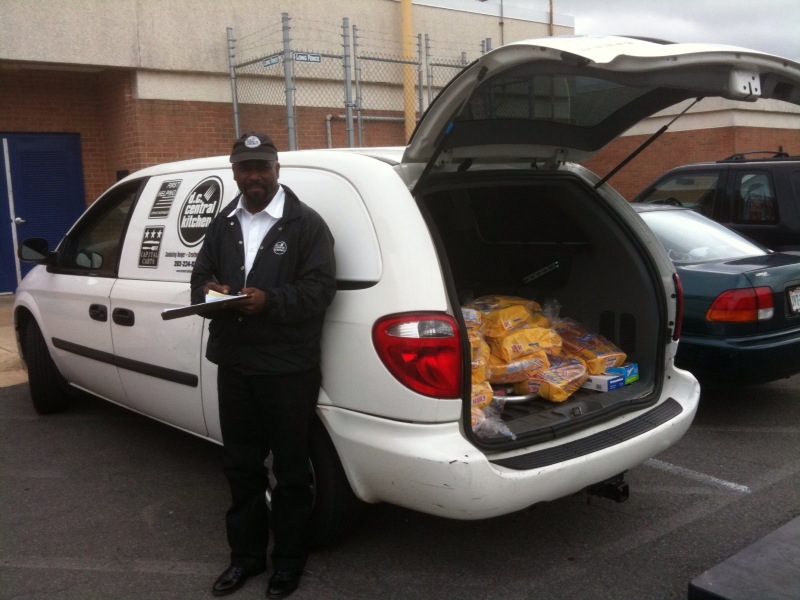01 The Client
The client’s mission is to use food as a tool to strengthen the community, offering job training, healthy food distribution, and local farm partnerships to provide path-breaking solutions to poverty, hunger, and poor health. (Learn more about our community partner’s mission here: https://dccentralkitchen.org/)
02 The Challenge
The client purchases raw food ingredients to create meals at DC public schools and community aid programs. These items are delivered to the Nutrition Lab daily and stored in pantries, freezers, and coolers. The procurement manager was currently keeping track of inventory by performing a monthly visual inspection. The client experienced over-ordering and waste caused by the difficulty in tracking these products, their inventory levels, and expiration dates.
03 The Solution
Team Herren mapped the baseline procurement process to define the scope of the proposed inventory control system and conducted interviews to determine the stakeholder requirements. Next, the team researched inventory control best practices and created a plan for implementing these practices at the client’s facility. Their research resulted in the decision to create an Access database for the client to manage and track inventory metrics.
04 The Result
Herren’s inventory control tool allows the client to create orders, track order receipts, and identify expiring items. The team also created a complementary guidebook to ensure successful implementation of the inventory control database. Finally, the team standardized the procurement process across several of the client’s programs and defined roles and responsibilities for the procurement, receiving, and production teams. The automated tool reduces waste through overspending, reduces the administrative time of purchasing the food, and ensures that the optimal amount of food is being stored and delivered from the facilities.
-DCCK Logistics Project-
01 The Client
The client’s mission is to use food as a tool to strengthen the community, offering job training, healthy food distribution, and local farm partnerships to provide path-breaking solutions to poverty, hunger, and poor health.
02 The Challenge
The client’s logistics department includes their logistics manager and 12 drivers who perform donation pick-ups and drop-offs throughout the DC area on a daily basis. They receive their schedule from the procurement manager who coordinates with the agencies providing or receiving goods. Most of these stops are provided based on a routine schedule; however, the transportation team does receive unexpected pick-up requests throughout the day. Often these pick-ups are non-value-added as the value does not exceed the cost of performing the pickup. This contributes to overtime pay for drivers who are kept on duty longer each day.
03 The Solution
Team Herren conducted several stakeholder interviews with the logistics team to identify and map the daily process for receiving orders, assigning them to the drivers, and performing the stops. Next, the team collected delivery and pick-up routes and delivery tickets to assess the distance traveled against the value of goods received. Finally, the team performed root cause analysis to identify the source for non-value-added pickups. The team found that there were no criteria for preventing low quantity and poor quality goods from being picked up, and no cost/benefit analysis for identifying the value of a pickup.
04 The Result
Herren worked with the client to establish stringent criteria for pickups, and provided them a cost/benefit calculator to ensure each pickup provided value. Team Herren documented the new process which includes the use of these products for receiving and accepting pick-ups. The criteria are communicated on the website for interested donors, and the process is used by the procurement manager to ensure pick-ups are value added. The new supply routes Team Herren created will reduce delivery time, missed shipments, and drive down costs by reducing the number of hours drivers are needed. The projected impact of the team’s work is over $10K a year in cost savings.
